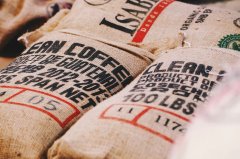Mixing coffee with coffee beans is a complicated art.
There are more than 100 coffee producing areas in the world, and the coffee beans produced have their own characteristics. The purpose of mixing coffee beans is to balance the flavor of coffee and create an unparalleled delicacy.
A single coffee bean generally lacks the complex flavor necessary to make delicious coffee. Many blends contain three to seven different types of beans. Roasters understand the characteristics of each kind of coffee beans and mix them artistically to create a new flavor. However, the knowledge of roasters mixing coffee beans is the highest industry secret.
In the United States, 100% Arabica coffee beans are used to mix the best coffee. In Italy, some Robster beans are added to blended coffee to increase the complexity of its fat, caffeine and coffee flavor. Italy has generations of experts who mix coffee beans.
Baking or mixing first has always been a controversial issue among bakers. Generally speaking, each product is roasted first and then mixed, which will maximize the different flavor characteristics of each kind of coffee and produce the best effect. The classic Blaser coffee beans launched by the Swiss coffee maker use this way to bring you the most delicious coffee.

Important Notice :
前街咖啡 FrontStreet Coffee has moved to new addredd:
FrontStreet Coffee Address: 315,Donghua East Road,GuangZhou
Tel:020 38364473
- Prev

High-quality coffee beans common sense several world-famous coffee features
Blue Mountain Coffee: produced in Jamaica, glycol, slightly sour, delicate flavor, light taste. Yunnan coffee: strong but not bitter, fragrant but not strong, supple, soft and mellow, slightly sour. Colombian coffee: from South America, slightly sour to moderately sour. Brazilian coffee: produced in South America, neutral, medium bitter, strong aroma, slightly sour, slightly bitter, introverted. Manning Coffee: production
- Next

Fine coffee beans, common sense, size, specification and grade of coffee beans
A, coffee can be divided into washing type and non-washing type according to specifications, and can also be divided into flat beans and round beans. Washing type: in the sink, after rubbing with water and utensils, the pulp and colloid are removed and dried, which is called washing coffee bean with uniform quality. Non-washing type: after the sun is naturally dried, the pulp and peel is removed by a sheller, and its quality is unstable. The fruit of coffee is made up of two oval shapes
Related
- Guji coffee producing area of Guji, Ethiopia: Humbela, Shakiso, Wulaga
- What is the most expensive variety of Qiloso in BOP multi-variety group?
- How to store the coffee beans bought home?
- Why are Yemeni coffee beans so rare now?
- Ethiopian Sidamo all Red Fruit Sun Sun Santa Vini Coffee beans
- SOE is mostly sour? What does it mean? Is it a single bean? what's the difference between it and Italian blending?
- Is Italian coffee beans suitable for making hand-brewed coffee?
- How to choose coffee beans when making cold coffee? What kind of coffee beans are suitable for making cold coffee?
- Just entered the pit to make coffee, what kind of coffee beans should be chosen?
- Can only Japan buy real Blue Mountain Coffee? What are authentic Jamaican Blue Mountain coffee beans?

